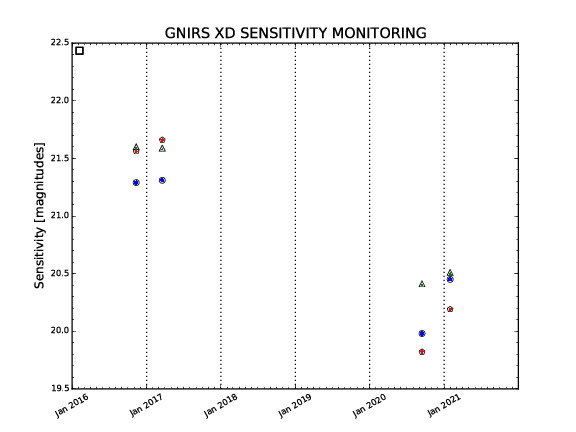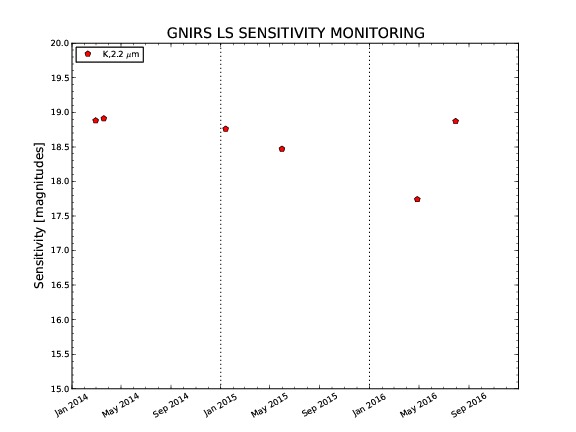GNIRS Sensitivity
You are here
The sensitivities reported for GNIRS reflect the magnitude of an object that would provide a signal-to-noise ratio of 1 for an hour of integration time (SN1 hr). To calculate the signal-to-noise ratio, the signal is determined from spectrophotometric standard stars observed with requested photometric (CC50) IQ20 to IQ85 conditions, while the noise is determined from a subtracted pair of sky frames. The sky frames used have an integration time (T) > 150 seconds, observed within temporal proximity of the standard star, and are observed under the same photometric conditions. The sensitivity is calculated for two different modes: the cross-dispersed (XD) mode observed using the short blue camera and the 32 l/mm grating, and the long-slit (LS) mode observed using the long blue camera and the 111 l/mm grating.
The signal is found by taking the mean over the standard star's spectrum (S) with an aperture equal to 1.18*FWHM. With a subtracted pair of sky frames, on an area of sky generally free of sky lines and artifacts, noise (N) is determined by multiplying the average standard deviation in the background counts by the square root of the aperture area used to find the signal.
With a subtracted pair of long-sky frames, on an area of sky generally free of sky lines and artifacts, noise (N) is determined by multiplying the average standard deviation in the background counts by the square root of the aperture area used to find the signal.
| SN1 hr = | S * (3600 / Ttelluric)
N * (3600 / (2 * Tsky))1/2 |
To find the sensitivity, the signal-to-noise ratio (SN1 hr) is converted to a magnitude and added to the Simbad magnitude (MSimbad), in the corresponding waveband, of the standard star:
| Sensitivity = 2.5 * log(SN1 hr) + MSimbad . |
Sensitivity measurements for standard star observations, taken at the central wavelength of each band, are reported below.


